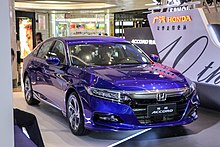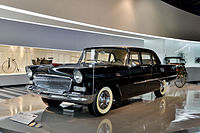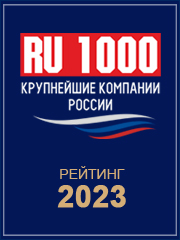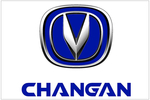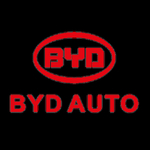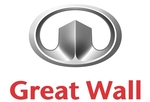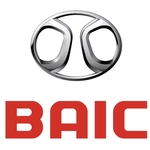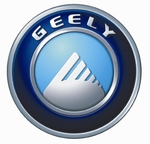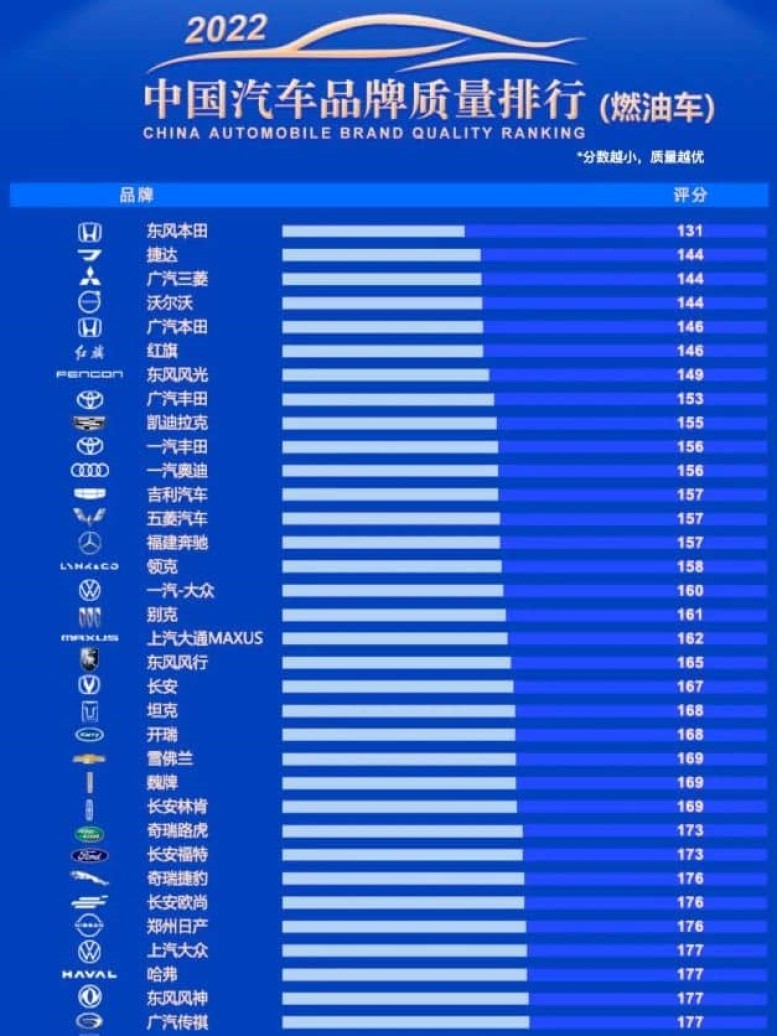Geely Borui was named 2016 China «Car of the Year»[1]
BYD Tang was named top selling plug-in passenger vehicle in China in 2016[2]
The automotive industry in China has been the largest in the world measured by automobile unit production since 2008.[3][4] Since 2009, annual production of automobiles in China accounted for more than 32% of worldwide vehicle production, exceeding both that of the European Union and that of the United States and Japan combined.[5]
The traditional «Big Four» domestic car manufacturers are SAIC Motor, Dongfeng, FAW and Chang’an. Other Chinese car manufacturers are Geely, Beijing Automotive Group, Brilliance Automotive, BYD, Chery, Guangzhou Automobile Group, Great Wall and Jianghuai (JAC). In addition, several multinational manufacturers have partnerships with domestic manufacturers.
While most of the cars manufactured in China are sold within China, exports – accounting for 11.5% of total production – reached 3.11 million units in 2022, making the country the world’s second biggest car exporter.[6] China’s home market provides its automakers a solid base and Chinese economic planners hope to build globally competitive auto companies[7][8] that will become more and more attractive and reliable over the years.[9]
China’s automobile industry can be traced back to the early origin of Changan Automobile in 1862.[10] China’s automobile industry had mainly Soviet origins (plants and licensed auto design were founded in the 1950s, with the help of the USSR) and had small volumes for the first 30 years of the republic, not exceeding 100–200 thousands per year. Since the early 1990s, it has developed rapidly. China’s annual automobile production capacity first exceeded one million in 1992. By 2000, China was producing over two million vehicles. After China’s entry into the World Trade Organization (WTO) in 2001, the development of the automobile market accelerated further. Between 2002 and 2007, China’s national automobile market grew by an average 21 percent, or one million vehicles year-on-year.[11] In 2009, China produced 13.79 million automobiles, of which 8 million were passenger cars and 3.41 million were commercial vehicles and surpassed the United States as the world’s largest automobile producer by volume. In 2010, both sales and production topped 18 million units, with 13.76 million passenger cars delivered, in each case the largest by any nation in history.[12] In 2014, total vehicle production in China reached 23.720 million, accounting for 26% of global automotive production.[13]
The number of registered cars, buses, vans, and trucks on the road in China reached 62 million in 2009.[14] The consultancy McKinsey & Company estimates that China’s car market will grow tenfold between 2005 and 2030.[15]
China had about 250 million cars by the end of June 2019, according to the Ministry of Public Security.
The main industry group for the Chinese automotive industry is the China Association of Automobile Manufacturers (中国汽车工业协会).
Manufacturers and brands[edit]
There exists a grouping of traditional “Big Four” state-owned car manufacturers of China, namely: SAIC Motor, FAW, Dongfeng, and Chang’an, with car sales of 5.37 million, 3.50 million, 3.28 million and 2.30 million in 2021 respectively.[16][17] BAIC frequently challenged Chang’an as the fourth largest automaker but has since fallen behind.
SAIC Motor Corporation (上海汽车集团股份有限公司), also known as SAIC (上汽) and SAIC-GM (上汽通用), is a Chinese state-owned automotive manufacturing company headquartered in Shanghai. The company had the largest production volume of any Chinese automaker in 2017, making more than 6.9 million vehicles.[18]
SAIC sells vehicles under a variety of brands. Brand names that are exclusive to SAIC include Maxus, MG, Roewe, and Yuejin. Products produced by SAIC joint venture companies are sold under marques including Baojun, Buick, Chevrolet, Iveco, Škoda, Volkswagen, and Wuling.
Dongfeng Motor Corporation (东风汽车公司, abbreviated to 东风) is a Chinese state-owned automobile manufacturer headquartered in Wuhan. The company was the second-largest Chinese vehicle maker in 2017, by production volume, manufacturing over 4.1 million vehicles that year.[18] Its own brands are Dongfeng, Venucia and AEOLUS. Joint ventures include Cummins, Dana, Honda, Nissan, Infiniti, Stellantis (through PSA Peugeot Citroën), Renault, Kia and Yulon.
FAW Group Corporation (第一汽车集团, abbreviated to 一汽) is a Chinese state-owned automotive manufacturing company headquartered in Changchun. In 2017, the company ranked third in terms of output making 3.3 million vehicles.[18] FAW sells products under at least ten different brands including its own and Besturn/Bēnténg, Dario, Haima, Hongqi, Jiaxing, Jie Fang, Jilin, Oley, Jie Fang and Yuan Zheng, and Tianjin Xiali. FAW joint ventures sell Audi, General Motors, Mazda, Toyota and Volkswagen.
Chang’an Automobile Group (重庆长安汽车股份有限公司, abbreviated to 长安) is an automobile manufacturer headquartered in Chongqing, and is a state-owned enterprise. In 2017, the company ranked fourth in terms of output making 2.8 million vehicles in 2017. Changan designs, develops, manufactures and sells passenger cars sold under the Changan brand and commercial vehicles sold under the Chana brand. Foreign joint venture companies include Suzuki, Ford, Mazda and PSA Peugeot Citroën.
BAIC Group, also known as Beiqi (Chinese: 北汽集团, abbreviated to 北汽), is a state-owned enterprise and holding company of several Chinese automobile and machine manufacturers located in Beijing. In 2014, the company ranked fifth in terms of output making 2.5 million vehicles.[18] Its principal subsidiaries include the passenger car maker BAIC Motor, the military vehicle and SUV maker BAW and the truck, bus and agricultural equipment maker Foton Motor. BAIC’s parent is the Beijing Municipal Government’s State-owned Assets Supervision and Administration Commission (SASAC). It has foreign joint ventures with Hyundai and Mercedes-Benz.
Other notable Chinese automotive manufacturers include:[18]
BYD, is an auto manufacturer founded by BYD Company who are known for their batteries and electric buses around the world. They were also the seventh best-selling Chinese car brand in 2017.
GAC (Guangzhou Automobile Group), is a Chinese state-owned[19] automobile manufacturer headquartered in Guangzhou. They were the sixth biggest manufacturer in 2017, manufacturing over 2 million vehicles in 2017. GAC sells passenger cars under the Trumpchi brand. In China, they are more known for their foreign joint-venture with Fiat, Honda, Isuzu, Mitsubishi, and Toyota.
Geely, is the biggest privately owned automobile manufacturer and seventh biggest manufacturer overall in China. Their flagship brand Geely Auto became the top Chinese car brand in 2017. Currently one of the fastest growing automotive groups in the world, Geely is known for its ownership of the Swedish luxury car brand Volvo Cars, its performance counterpart Polestar, and the British sports car company Lotus. In China, their passenger car brands include Geely Auto, Volvo Cars, and Lynk & Co.
Great Wall, the eighth biggest manufacturer in 2017 and the largest manufacturer of SUVs. Great Wall sells vehicles under the brands of Haval and WEY.
Brilliance Auto, is a Chinese state-owned automobile manufacturer based in Shenyang. They were the ninth biggest manufacturer in 2017. They have a foreign joint venture with BMW and also sells passenger vehicles under their own brand Brilliance.
Chery, a Chinese state-owned automobile manufacturer based in Anhui. They were the tenth biggest manufacturer in 2017. They have a foreign joint venture with Jaguar Land Rover for the production of Jaguar and Land Rover cars in China. They also sell cars under the Chery brand and Qoros brand.
| Rank | Company | Number of sales in China (2021)[16] | Revenue (US$) (2021) |
|---|---|---|---|
| 1 | SAIC Motor | 5.365 million | 107.6 billion |
| 2 | FAW Group | 3.501 million | 101.1 billion |
| 3 | Dongfeng Motor Corporation | 3.275 million | 86.9 billion |
| 4 | Chang’an Automobile Group | 2.301 million | |
| 5 | GAC Group | 2.144 million | 57.7 billion |
| 6 | BAIC Group | 1.723 million | 72.2 billion |
| 7 | Geely | 1.328 million | 47.2 billion |
| 8 | Great Wall Motor | 1.281 million | 21.52 billion |
| 9 | Chery Automobile | 0.959 million | |
| 10 | BYD | 0.745 million |
| State-owned | Private owned | ||||||||
|---|---|---|---|---|---|---|---|---|---|
| Year | FAW | Dongfeng | SAIC | GAC | Chang’an | Chery | Geely | BYD | GreatWall |
| 2010 | 1,038,290 | 973,144 | 1,424,513 | 45,065 | 1,316,557 | 750,456 | 425,194 | 521,761 | 415,779 |
| 2011 | 907,337 | 1,052,707 | 1,433,387 | 44,056 | 987,991 | 729,497 | 857,006 | 454,676 | 518,965 |
| 2012 | 718,327 | 976,539 | 1,659,973 | 71,505 | 950,568 | 653,476 | 905,083 | 462,512 | 672,234 |
| 2013 | 723,969 | 1,075,459 | 1,884,112 | 124,001 | 990,556 | 561,062 | 979,691 | 514,188 | 803,449 |
| 2014 | 627,006 | 1,066,036 | 2,051,240 | 146,694 | 1,126,011 | 570,718 | 878,818 | 446,329 | 767,825 |
| 2015 | 505,849 | 1,010,215 | 2,272,961 | 207,890 | 1,270,154 | 575,108 | 1,025,287 | 451,868 | 871,315 |
| 2016 | 505,711 | 1,193,327 | 2,533,586 | 375,723 | 1,382,917 | 682,474 | 1,333,077 | 510,157 | 1,086,639 |
| 2017 | 572,862 | 1,244,818 | 2,811,224 | 508,797 | 1,327,168 | 604,708 | 1,867,066 | 421,158 | 1,085,654 |
| 2018 | 543,986 | 1,053,457 | 2,957,136 | 535,323 | 1,139,540 | 752,759 | 2,212,102 | 528,298 | 1,072,529 |
| 2019 | 589,832 | 1,012,578 | 2,621,117 | 384,792 | 1,060,676 | 747,806 | 2,093,962 | 467,960 | 1,097,451 |
| 2020 | 779,403 | 1,005,224 | 2,575,775 | 353,597 | 1,306,169 | 731,117 | 2,040,418 | 431,447 | 1,111,598 |
| 2021 | 846,803 | 1,054,612 | 2,811,922 | 447,207 | 1,557,282 | 961,926 | 2,105,560 | 749,325 | 1,280,993 |
| 2022 | 554,260 | 764,291 | 2,784,581 | 633,704 | 1,874,569 | 1,232,727 | 2,290,503 | 1,881,669 | 1,102,322 |
| Year | Nio | Xpeng | Neta | Leapmotor | Li | Seres |
|---|---|---|---|---|---|---|
| 2018 | 11,348 | 482 | 1,206 | — | — | — |
| 2019 | 20,565 | 16,608 | 11,212 | 1,000 | 1,000 | — |
| 2020 | 43,728 | 27,041 | 15,509 | 10,266 | 33,457 | — |
| 2021 | 91,429 | 98,155 | 69,674 | 43,121 | 90,491 | — |
| 2022 | 122,486 | 120,757 | 152,073 | 111,168 | 133,246 | 76,180 |
| Year | Total | Domestic share | Global share |
|---|---|---|---|
| 2010 | 6,273,000 | 45.6% | 7.96% |
| 2011 | 6,112,200 | 42.2% | 7.24% |
| 2012 | 6,485,000 | 41.9% | 7.23% |
| 2013 | 7,222,000 | 40.3% | 8.03% |
| 2014 | 7,518,000 | 38.1% | 8.28% |
| 2015 | 8,737,600 | 41.3% | 9.27% |
| 2016 | 10,529,000 | 43.2% | 10.96% |
| 2017 | 10,847,000 | 43.9% | 11.15% |
| 2018 | 9,890,000 | 42.1% | 10.35% |
| 2019 | 8,470,000 | 39.2% | 9.17% |
| 2020 | 7,749,000 | 38.4% | 9.83% |
| 2021 | 9,543,000 | 44.4% | 12.06% |
| 2022 | 11,943,200 | 50.7% | 15.04% |
| Company | Domestic marques | EV marques | Foreign-branded JVs |
|---|---|---|---|
| SAIC Motor | Maxus, MG, Roewe, Baojun (under SGMW), Wuling (under SGMW) | Feifan, IM | SAIC-Volkswagen (Volkswagen, Skoda, Audi), SAIC-General Motors (Buick, Chevrolet, Cadillac) |
| FAW Group | Hongqi, Bestune (Benteng), Haima | FAW-Toyota, FAW-Volkswagen | |
| Dongfeng Motor Corporation | Venucia, Fengdu, Aeolus, Forthing | Voyah | Dongfeng-Honda, Dongfeng-Nissan, Dongfeng-Peugeot Citroën |
| Chang’an Automobile Group | Changan, Oshan, Kaicene | Shenlan | Changan Ford, Changan Mazda |
| GAC Group | Trumpchi | Aion, Hycan | GAC-Toyota, GAC-Honda, GAC-FCA (Jeep), GAC-Mitsubishi |
| BAIC Group | Beijing, BAW, Changhe, Foton, Ruili Doda | Arcfox | Beijing-Benz, Beijing-Hyundai |
| Geely | Volvo Cars, Geely ,Maple, Polestar, Lynk & Co, Lotus, LEVC, Farizon | Geometry, Zeekr | Proton |
| Great Wall Motor | GWM, Haval, WEY, TANK, POER | ORA | |
| Chery Automobile | Chery, Exeed, Jetour | Chery-Jaguar Land Rover | |
| BYD | BYD | BYD-Toyota, Denza | |
| Brilliance Auto Group | Brilliance | BMW-Brilliance | |
| JAC Motors | JAC | Sehol |
Foreign manufacturer joint ventures[edit]
Companies from other countries with joint manufacturing ventures in China include Daimler-Benz, General Motors. The latter makes numerous cars in China in four factories, especially Buick, but also some Chevrolet and Cadillac models, in a 50/50 joint-venture with SAIC Motor,[22] formerly known as Shanghai General Motors Company Ltd.[23] In November 2018, the company announced new Chevrolet models for the Chinese market, including an extended-wheelbase Malibu XL, a new Chevy SUV concept, and a revival of the Monza nameplate.[24]
In 2001, 1.5 million people were employed in this industry in China, and contributed 12 billion U.S. dollars to the economy, which accounts for 5% of the total value added to China’s manufacturing industry.[25]
Beijing Benz Automotive Co., Ltd is a joint venture between BAIC Motor and Daimler AG. As of 22 November 2018, a full two million Mercedes-Benz vehicles had been built in China by this alliance.[26] At about the same time, the company announced the final development of a new Mercedes-Benz A-Class L sedan for China, in five variants, to «rival the China-made Audi A3 sedan and the BMW Series 1 sedan».[27] Daimler and another partner, BYD Auto (backed by Warren Buffett), were already manufacturing an electric car for the Chinese market, the Denza, with an improved Denza 500 announced in March 2018.[28] Apparently, Daimler-Benz was also having discussions about making battery-powered Smart cars in China with BYD Auto, according to an August 2018 report; the company would not comment on this topic. At the time, the petrol-powered Smart car was being imported into China.[29]
Honda Motor Co has a joint venture with Guangzhou Automobile Group (GAC Group) and planned to invest 3.27 billion yuan ($469 million) in 2019 in new-energy vehicle manufacturing in China, probably with the Trumpchi badge. Toyota’s joint venture is with GAC and the companies planned to build an electric vehicle under the GAC logo.[30] Nissan operates in China under a joint venture with Dongfeng Motor Group Co Ltd. A report in early 2018 indicated that the alliance planned to build a new manufacturing plant in Wuhan, China in addition to expanding the Dongfeng plant in Changzhou to increase capacity.[31] A late August update stated that Nissan and Dongfeng Group planned to invest roughly $900 million to eventually increase the production of Nissan vehicles in China to as many as 2.1 million per year. By September 1, 2018, Nissan’s first electric sedan for the Chinese market, the Sylphy Zero Emission, was in production.[32]
VW and Audi cars are manufactured in China by Volkswagen Group China under two joint-venture partnerships: FAW-Volkswagen and SAIC Volkswagen. They have sold 30 million cars as of November 2018.[33] In 2018, the alliance opened three new FAW-Volkswagen plants in China: in Qingdao, Foshan and Tianjin.[34] By 2019, the Audi expected to be making seven new SUV vehicle models in China. An executive with FAW-Volkswagen’s Audi division said that two million China-made Audi cars will be sold in the country by 2020. As of the end of 2017, the total to date was 777,000.[35] The joint venture SAIC Volkswagen was also in the process of building an electric-car plant in Anting, near Shanghai by late 2018; it was expected to make 300,000 e-vehicles per year, starting in 2020.[36]
BMW and Chinese partner Brilliance Automotive Group Holdings expected to make 520,000 cars in China during 2019.[37] In October 2018, the German company announced that it will spend €3.6bn ($4.16 billion) to increase ownership of Brilliance Automotive from 50% to 75%. BMW also planned to invest over €3bn to boost manufacturing in China as part of a goal to manufacture more than 650,000 units with Brilliance, starting in the early 2020s. The German company also made an alliance with Great Wall Motor to build electric-powered Mini cars in China for the domestic market.[38]
Jaguar Land Rover operates a joint venture with Chery. A news report in July 2018 suggested that the company was considering increasing their investment to create a new model for China; a late October report about the Jaguar Land Rover turnaround plan, however, did not outline any plan to proceed with this concept.[39]
The entire Volvo Cars company has been owned by the Chinese company Geely since 2010 and manufactures most of the XC60 vehicles in China for export to various countries as well as the local market. Other cars made in China (as of late 2018) for both the local market and for export include the Buick Envision, Ford Focus Active, Volvo S90 and the Cadillac CT-6 plug-in. (Prohibitive tariffs announced by the US in 2018 were expected to significantly reduce auto exports to that country.)[40] Geeley also has investments in Daimler, AB Volvo (the manufacturer of trucks, buses, construction equipment, and engines)[41] and Lotus.[42][43][44]
In October 2018, Ford and Baidu announced that they were planning to start testing autonomous vehicles together in Beijing roads by year end, using
Baidu’s «technological know-how and understanding of China together with Ford’s vehicle expertise».[45]
History[edit]
China’s automobile industry can be traced back to the early origin of Changan Automobile in 1862 when Li Hongzhang set up a military supply factory, the Shanghai Foreign Gun Bureau.[10][46] The first automobile in China was purchased from Hong Kong in 1902 by Yuan Shikai and gifted to Empress Dowager Cixi. It was later put on display in the Summer Palace Museum. During the early twentieth century, major western automobile manufacturers such as the Ford Motor Company, General Motors, and Mercedes-Benz had plants operating in Shanghai.
China’s automobile industry had mainly Soviet origins (plants and licensed auto design were founded in the 1950s, with the help of the USSR) and had small volumes for the first 30 years of the republic, not exceeding 100–200 thousands per year. Since the early 1990s, it has developed rapidly. China’s annual automobile production capacity first exceeded one million in 1992. By 2000, China was producing over two million vehicles. After China’s entry into the World Trade Organization (WTO) in 2001, the development of the automobile market accelerated further. Between 2002 and 2007, China’s national automobile market grew by an average 21 percent, or one million vehicles year-on-year.[11] In 2009, China produced 13.79 million automobiles, of which 8 million were passenger cars and 3.41 million were commercial vehicles and surpassed the United States as the world’s largest automobile producer by volume. In 2010, both sales and production topped 18 million units, with 13.76 million passenger cars delivered, in each case the largest by any nation in history.[47] In 2014, total vehicle production in China reached 23.720 million, accounting for 26% of global automotive production.[13]
1928 to 1949[edit]
The first Chinese built motor vehicle was a truck called the Ming Sheng. It was designed by Daniel F Myers and a prototype was made at the Liao Ning Trench Mortar Arsenal, Shenyang. The prototype was completed on May 31, 1931, for Zhang Xueliang. Prior to production commencing, the factory was bombed by the invading Japanese and production never commenced.[48] A fellow general, Yang Hucheng, patronized the inventor Tang Zhongming to make a new type of automobile engine powered by charcoal. In 1932 Tang founded the Chung Ming Machinery Co. Ltd. in Shanghai to produce the engines. Charcoal powered vehicles were mainly used during the Second Sino-Japanese War in China because of fuel shortages.[49] Tung oil was also used during the war as a petroleum substitute.[50] One source states that Du Yuming designed a car in 1937, but did not make it until 1943 after having been forced to move because of the war. No further information has been found about it.[51]
1949 to 1980[edit]
Several vehicle assembly factories were set up in the 1950s and 1960s. They were Beijing (today’s Beijing Automotive Industry Holding Corporation), Shanghai (today’s Shanghai Automotive Industry Corporation), Nanjing (later Nanjing Automobile (Group) Corporation, merged with SAIC), and Jinan (evolving into China National Heavy Duty Truck Group). The Second Automobile Works (later Dongfeng Motor Corporation) was founded in 1968.
The first Chinese production vehicles were trucks made by the First Automobile Works in 1956, called the Jiefang CA-30.[52] This was followed on March 10, 1958, by the 2½ ton light duty truck (NJ130), which was based on the Russian GAZ-51, was produced in Nanjing. The truck was named Yuejin (meaning «leap forward») by China’s First Ministry of Industrial Machinery.
In June 1958 the Nanjing Automobile Works, previously a vehicle servicing unit of the Army, was established. Production continued until the last truck (NJ134) rolled off the assembly line on July 9, 1987. Cumulative production was 161,988 units (including models NJ130, NJ230, NJ135 and NJ134). The first production automobiles were the Dongfeng CA71, Hongqi CA72, Feng Huang (later known as the Shanghai SH760) all from 1958.
1980 to 1990[edit]
Chinese Volkswagen Santana
The passenger car industry was a minor part of vehicle production during the first three decades of China’s socialist economy. As late as 1985, the country produced a total of only 5,200 cars. To announce that the desire for consumer goods was no longer politically suspect and stimulate personal spending, while also advertising the opening of the Chinese market to foreign producers, a fabricated news story about China’s first peasant to own a car was distributed across the world.[53] Sun Guiying, a chicken farmer from near Beijing was touted as having purchased a silver Toyota Publica with her earnings.[54] While the article was largely fraudulent (Mrs. Guiying did not know how to drive, and her husband was a senior official rather than a peasant),[55] the message came across loud and clear. Car sales increased dramatically, although they were almost entirely purchased by danweis (work units – private car ownership was virtually unknown at the time, in spite of the Sun Guiying story).[56]
As domestic production was very limited, import totals rose dramatically, despite a 260 per cent import duty on foreign vehicles. Before 1984, the dominant exporter of cars to China had been the Soviet Union. In 1984, Japan’s vehicle exports to China increased sevenfold (from 10,800 to 85,000) and by mid-1985 China had become Japan’s second biggest export market after the US.[57] The country spent some $3 billion to import more than 350,000 vehicles (including 106,000 cars and 111,000 trucks) in 1985 alone. Three taxi companies in particular thirsted for Japanese cars, such as Toyota Crowns and Nissan Bluebirds.[58]
As this spending binge began to lead to a severe trade deficit, the Chinese leadership put on the brakes, both through propaganda efforts and by making foreign exchange much less accessible.[59] Customs duties on imported goods were raised in March 1985 and a new «regulatory tax» was added a little later. In September 1985, a two-year moratorium on nearly all vehicle imports was imposed.[59]
While limiting imports, China also tried to increase local production by boosting the various existing joint-venture passenger car production agreements, as well as adding new ones. In 1983, American Motors Corporation (AMC, later acquired by Chrysler Corporation) signed a 20-year contract to produce their Jeep-model vehicles in Beijing. The following year, Germany’s Volkswagen signed a 25-year contract to make passenger cars in Shanghai, and France’s Peugeot agreed to another passenger car project to make vehicles in the prosperous southern city of Guangzhou.[58] These early joint ventures did not allow the Chinese to borrow much foreign technology, as knock-down kit assembly made up the majority of manufacturing activities;[60] tooling may not have been allowed to slip past borders.
1990 to present[edit]
Several enterprises entered the automobile industry since 1994. Some of them are originated from defense industry, such as Chang’an Motors, Changhe, and Hafei Motor; some were developed from old state-owned companies, such as BYD Auto, Brilliance China Auto, Chery Automobile, and Changfeng Automobile. Others are private-owned companies, such as Geely Automobile and Great Wall Motors.
On February 29, 2016, the Ministry of Industry and Information Technology shut down 13 automobile manufacturers that did not meet mandatory production evaluations for two consecutive years.[61]
The number of registered cars, buses, vans, and trucks on the road in China reached 62 million in 2009, with cars accounting for two-thirds of that number, according to the traffic bureau of the Ministry of Public Security. At that time, it was expected to increase to 200 million by 2020.[14] In fact, by March 2017, there were 300.3 million registered vehicles.[62] A 2018 analysis published by the University of California predicted that up to 419 million vehicles would be registered by 2022 and over 500 million by 2030.[63]
In 2017, the country imported 1.25 million cars according to the China Association of Automobile Manufacturers. Both exports and imports from the US are expected to decline in due to increased tariffs by both the United States and China in July 2018.[64] By value, in 2019, over half of car imports originated from the European Union.[65]
The government is limiting the number of conventionally-powered new cars that are licensed each year, particularly in Beijing where the wait for a license plate in 2018 was roughly five years. Each such plate was priced at US$14,300, an amount that would almost be adequate to buy a small economy car. Licenses for electric vehicles on the other hand, can be obtained quite quickly.
[66]
According to research by investment bank Goldman Sachs, newly opened Chinese car plants are the most robotized of such facilities worldwide.[67][68]
According to China Association of Automobile Manufacturers (C.A.A.M), automakers in China delivered 28,226,616 passenger and light commercial vehicles in 2017. Volkswagen remained the best-selling brand followed by Honda. In 2017, Geely surprised everyone by rocketing to become the third best-selling brand in China and the top Chinese brand in the market. Korean and American brands suffered from lackluster sales with Hyundai dropping from the top ten and GM and Ford both falling below local Chinese brands. Below is a breakdown of the deliveries by brand.[69]
The best selling specific model in 2017 was the Wuling Hong Guang minivan made in partnership with SAIC-GM, formerly known as Shanghai General Motors Company Ltd.[23] In fact, five of the top-15 models were produced by SAIC-GM. Volkswagen had three models in the top-15, including the number-two Lavida[70] while Geely, Great Wall, and Guangzhou Automotive Corp (GAC) models accounted for several models on that list.[71] Number three of the top-15 belonged to the Nissan Bluebird Sylphy/Sylphy, number four to the Haval H6 and number five to the VW New Santana.[72]
Alternative fuel vehicles[edit]
China encourages the development of clean and fuel efficient vehicles in an effort to sustain continued growth of the country’s automobile industry (see Fuel economy in automobiles). By the end of 2007, China plans to reduce the average fuel consumption per 100 km for all types of vehicles by 10%. The proportion of vehicles burning alternate fuel will be increased to help optimize the country’s energy consumption. Priority will be given to facilitating the research and development of electric and hybrid vehicles as well as alternate fuel vehicles, especially CNG/LNG. Major cities like Beijing and Shanghai already require Euro-3 emission standards. On March 10, 2008, Beijing became the first city to require light-duty vehicles to meet China-4 emission standard, which was equivalent to Euro-4. Beijing shifted its emission standards to the fifth-stage standards for light-duty and heavy-duty vehicles in January 2013 and August 2015, respectively. On 12 April 2016, the Ministry of Environmental Protection (MEP) released the proposal for light-duty China-6 standard.
Electric vehicles (EV) and Fuel cell vehicles (FCV)[edit]
Due to serious air pollution problems and ever-increasing traffic, alternative-energy vehicle production is an area of strong focus for the Chinese government, and several NEV-friendly policies have appeared at the national and local level as a result. In many cities, free licenses — otherwise a significant expenditure for traditional vehicles — are provided for electric vehicle owners, along with exemptions for registry lotteries. These kinds of policies have created strong interest in new energy vehicles within China.
The Chinese Automotive Industry Plan, announced on the main Web site of China’s central government, said China aims to create capacity to produce 500,000 new energy vehicles, such as battery electric cars and plug-in hybrid vehicles. The plan aims to increase sales of such new-energy cars to account for about 5% of China’s passenger vehicle sales.[73] At the 2010 Beijing Motor Show, more than 20 electric vehicles were on display, most of which came from native automakers. As of May 2010, at least 10 all-electric models have been reported to be on track for volume-production.[74] The first mass-produced plug-in hybrid car (BYD F3DM), all-electric minivan (BYD e6) and all-electric long-range bus (BYD K9) are Chinese.
New energy vehicle sales between January 2011 and March 2016, totaled 502,572 units, of which, over 92% were sold between January 2014 and March 2016. These figures include heavy-duty commercial vehicles such buses and sanitation trucks. These figures only include vehicles manufactured in the country as imports are not subject to government subsidies. As of March 2016, the Chinese stock of plug-in electric vehicles consist of 366,219 all-electric vehicles (72.9%) and 136,353 plug-in hybrids (27.1%).[75][76][77][78][79][80]
As of December 2015, China is the world’s largest electric bus market, and by 2020, the country was expected to account for more than 50% of the global electric bus market.[81] China also is the world’s leader in the plug-in heavy-duty segment, including electric buses, plug-in trucks, particularly sanitation/garbage trucks.[82][83]
A September 2018 update by CNBC included a prediction that the market share of China’s electric vehicles will grow by 40% in the short term and that China expected total annual sales of electric and gasoline-electric hybrid vehicles to be 2 million by 2020.[84] The government was encouraging the purchase of such cars with a short wait time for a new license plate and with government-backed discounts of up to 40% on electric vehicles.[66] In 2018, new-energy vehicles accounted for about 3% of China’s new car sales; that was expected to increase to over 30% by 2030 according to an estimate by the Japanese Mizuho Bank.[85]
The country has a significant benefit over others. Some two-thirds of the world’s lithium-ion batteries are made in China and the country’s EV manufacturing facilities are close to the source these components. In October 2018, Tesla purchased land for the construction of an EV manufacturing plant in Shanghai’s Lingang area.[86][87] By then, VW had already begun construction of its EV factory, with a planned annual capacity of 300,000 SAIC-VW MEB-platform vehicles, starting with three battery-electric vehicles and two plug-in hybrids.[88][89] Toyota Motor had already launched sales of an EV branded under Guangzhou Automobile Group; the two companies have a joint venture in China.[85]
Sales[edit]
In China, authorized car dealership are called 4S car shops. The 4S represents Sales (整車销售 ), Spare parts (零配件), Service (售後服务) and Survey (信息反馈).
In most cases, brand-name new cars can only be purchased from 4S shops. For new cars in high demand, a high premium is added for instant delivery or just placing an order.
The profit of car dealers in China is quite high compared to the rest of the world, in most cases 10%. This is supposedly due to the ‘non-transparent invoice price’ as announced by manufactures and to the premiums they charge for quick delivery. Due to the lack of knowledge for most customers, dealers can sell add-ons at much higher prices than the aftermarket.
There is no regulation by either the government or associations but some retailers are members of the China Automobile Dealers Association (CADA).[90]
Exports[edit]
As of 2012, exports of Chinese automobiles were about 1 million vehicles per year and rapidly increasing. Most sales were made to emerging economies such as Afghanistan, Algeria, Brazil, Chile, Colombia, Costa Rica, Ecuador, Egypt, Iraq, Iran, Libya, Mexico, North Korea, Peru, the Philippines, Russia, Saudi Arabia, South Africa, or Turkey[91] where a Chinese-made automobile such as a Geely, Great Wall, or Chery sells for about half of what a comparable model manufactured by a multinational brand such as Toyota does. Cars made in China by multinational joint ventures are generally not exported. The quality of Chinese cars is increasing rapidly but, according to J. D. Power and Associates in 2012, it was not expected to reach parity with multinational manufacturers until about 2018.[92]
Most of cars manufactured in China are sold within the country; in 2011, exports totalled 814,300 units.[91] China’s home market provides its automakers a solid base and Chinese economic planners hope to build globally competitive auto companies[7][8] that will become more and more attractive and reliable over the years.[9] In 2017, the country exported roughly 891,000 vehicles.[93] In that year, the value of exports was nearly $70 billion in auto parts and $14 billion in cars, while total imports (parts and vehicles) totalled about $90 billion.[94]
In 2022, Chinese car exports reached 3.11 million units, ranking second worldwide. Domestic sales still accounted for the bulk of the 27 million units produced. Electric cars sales totaled 679,000.[6]
| Year | Total | Passenger vehicle | Commercial veichle |
|---|---|---|---|
| 2010 | 544,900 | 283,000 | 261,900 |
| 2011 | 814,000 | 476,100 | 338,200 |
| 2012 | 1,056,100 | 661,200 | 394,900 |
| 2013 | 977,300 | 596,300 | 381,000 |
| 2014 | 910,400 | 533,000 | 377,300 |
| 2015 | 699,400 | 345,400 | 354,000 |
| 2016 | 708,000 | 477,000 | 231,000 |
| 2017 | 891,000 | 639,000 | 252,000 |
| 2018 | 1,041,000 | 758,000 | 283,000 |
| 2019 | 1,024,000 | 725,000 | 299,000 |
| 2020 | 995,000 | 760,000 | 235,000 |
| 2021 | 2,015,000 | 1,614,000 | 402,000 |
| 2022 | 3,111,000 | 2,529,000 | 582,000 |
Controversies[edit]
See Allegations of intellectual property theft by China
Copying claims controversy[edit]
Several Chinese car makers have been accused of copying designs of other established companies, mainly during 2000s to 2010s. Some BYD models have historically appeared similar to those of other brands including Lexus,[95] Toyota,[96][97] Honda,[98] Mercedes Benz,[99][100][101] and Porsche.[102] GM executives claimed design duplication of the Chery QQ to the Daewoo Matiz,[103] which may extend to interchangeable parts.[104] Jaguar Land Rover regarded Landwind X7 as a copy of the Range Rover Evoque which lead to the lawsuit and Jaguar Land Rover wins the case. German automaker Porsche threatened Zotye with legal action after it revealed the Zotye SR9 in 2016, which is said to resemble the Porsche Macan.[105] The car has been described as a «complete knockoff», with many aspects of the exterior and interior resembling the Macan.[106]
Threats to disclose industry secrets[edit]
The Wall Street Journal reported that the government of China will be forcing foreign carmakers to disclose their electric vehicle technology secrets before the vehicles are allowed to be sold in China. The current Chinese automotive policy states that a foreign carmaker must form a joint-venture with a Chinese carmaker if the former plans to sell its electric vehicles there, with the Chinese carmaker owning 51% of the joint venture.
Due to this supposed threat by the Chinese government, Toyota postponed the launch of the current-generation Prius until they learn more about the plan.[107]
According to The New York Times, GM was asked to disclose key technological information on the Volt. Failure to do so would result in not qualifying for substantial (up to $19000) subsidies.[108]
In 2011, China was believed to be behind the theft of information from Renault.[109] In 2013 a US couple was sentenced to jail time for revealing GM trade secrets to Chery.[110]
In 2014 it was noted there are «stringent» and «extreme» requirements for intellectual property transfer in order to sell to the Chinese market.[111] Imported electric vehicles are subject to high taxes and no subsidies.
[112]
In 2017, the US government signaled willingness to investigate such forced technology transfers.[113]
See also[edit]
- Economy of China
- Electric vehicle industry in China
- Motorcycle industry in China
- Military vehicles of China
- Pollution in China
- Renewable electricity
- Renewable energy in China
References[edit]
- ^ «Geely GC9 Is China’s 2016 Car Of The Year | Carscoops». Carscoops. 2015-11-19. Retrieved 2018-08-15.
- ^ «Best-selling China-made EVs in 2016». China Auto Web. 2017-01-19. Retrieved 2017-01-25.
- ^ «China emerges as world’s auto epicenter — Politics- msnbc.com». MSNBC. 2009-05-20. Archived from the original on 19 May 2009. Retrieved 2009-05-25.
- ^ «More cars are now sold in China than in America». The Economist. 2009-10-23.
- ^ cycles, This text provides general information Statista assumes no liability for the information given being complete or correct Due to varying update; Text, Statistics Can Display More up-to-Date Data Than Referenced in the. «Topic: Automotive manufacturing industry in China». Statista. Retrieved 2022-11-19.
- ^ a b «China closes in on Japan after surpassing Germany in 2022 car exports». South China Morning Post. 2023-01-15. Retrieved 2023-01-28.
- ^ a b «US-China Institute :: news & features :: video: greg anderson on state capitalism in china’s auto industry». China.usc.edu. 2012-02-22. Retrieved 2014-02-25.
- ^ a b «DESIGNATED DRIVERS — How China Plans to Dominate the Global Auto Industry». Designateddrivers.co. Retrieved 2014-02-25.
- ^ a b «Should We Start buying Chinese Cars Already?». Motorward. Retrieved 2017-10-22.
- ^ a b TABETA, SHUNSUKE (8 Feb 2017). «Changan Auto sells 3m cars in record year». The Nikkei Asian Review. Retrieved 20 January 2018.
- ^ a b «China’s 10 millionth vehicle this year comes off the production line — People’s Daily Online». English.people.com.cn. 2009-10-21. Archived from the original on 17 November 2009. Retrieved 2009-12-05.
- ^ «Chinese Auto Sales Set New World Record of 18 Million Units in 2010». ChinaAutoWeb.com.
- ^ a b China Corp. 2015 — Auto Industry, DCA Chine-Analyse
- ^ a b «How Many Cars are There in China?». ChinaAutoWeb.com.
- ^ «China’s E6 electric car: ‘We’re not trying to save the world – we’re trying to make money’«. BusinessGreen.com. 3 April 2009. Archived from the original on 4 December 2009. Retrieved 2009-12-05.
- ^ a b «2021全年汽车销量出炉,上汽卫冕,三家民营车企挤入前十_腾讯新闻».
- ^ New policy to encourage China’s carmaker consolidation xinhuanet.com, 2010-02-22 10:27:20
- ^ a b c d e «2017年汽车分车型前十家生产企业销量排名». caam.org.cn. China Association of Automobile Manufacturers (CAAM). Archived from the original on 2014-12-13.
- ^ A Quick and Simple (Or Not) Guide To Chinese Car Company Names
- ^ «HOME | Automotive Industry Portal MarkLines | Portal». www.marklines.com. Retrieved 2022-12-05.
- ^ a b «中国汽车工业协会». www.caam.org.cn. Retrieved 2023-02-01.
- ^ Why GM Can’t Rely on China This Time — BNN Bloomberg
- ^ a b Saic General Motors Corp Ltd: Company Profile — Bloomberg
- ^ Chevy Is Reviving The Monza Nameplate
- ^ https://www.wilsoncenter.org/sites/default/files/media/documents/publication/CES%206%20Feature%20Article%2C%20pp.%201-18.pdf[bare URL PDF]
- ^ Mercedes celebrates two million cars produced in China with the launch of the A-Class production | Magneti Marelli
- ^ All-new Mercedes-Benz A-Class L sedan hits China to rival BMW 1 Series, Audi A3
- ^ Daimler launches new Denza electric vehicle for Chinese market — Xinhua | English.news.cn
- ^ Daimler in talks to make electric smart cars in China INTERNATIONAL / 11 AUGUST 2018, 8:00PM / BLOOMBERG NEWS
- ^ Honda and GAC Group to build $430 million Chinese plant for new-energy cars Norihiko Shirouzu, Yilei Sun. Reuters OCTOBER 31, 2018 / 6:20 PM
- ^ Reuters
- ^ Nissan launches China-focused electric car | Financial Post
- ^ VW delivers 30 millionth car in China | Automotive Industry News | just-auto
- ^ Volkswagen expands production in China
- ^ Audi chooses China as the stage for the global debut of its flagship Q8 — Chinadaily.com.cn
- ^ https://global.handelsblatt.com/companies/vw-revamps-production-electric-age-981646[permanent dead link]
- ^ BMW Unveils Plan to Boost Production in China – Bloomberg
- ^ BMW to take control of China venture Brilliance Automotive – BBC News
- ^ Jaguar Land Rover takes drastic action as carmaker skids to loss | Bournemouth Echo
- ^ «Made in China: Buick, Cadillac and Volvo pull US imports of some cars over Trump trade tariffs». CNBC. 6 September 2018.
- ^ AB Volvo (publ): Private Company Information — Bloomberg
- ^ Shepardson, David (14 September 2018). «Volvo Cars seeks U.S. tariff exemption for Chinese-made SUV». CNBC.
- ^ «Daimler in $2 billion China investment with BAIC as Geely swoops». Reuters. 25 February 2018.
- ^ Welch, David (31 August 2018). «Ford Cancels Plans to Import SUV Model From China in Wake of Tariffs». Bloomberg.com. Bloomberg.
- ^ Ford and Baidu will develop self-driving cars together in China — CNN
- ^ Narasimhan, T. E. (2016-07-09). «China’s Changan revs up for India entry». www.business-standard.com. Retrieved 2016-07-09.
- ^ «Chinese Auto Sales Set New World Record of 18 Million Units in 2010». ChinaAutoWeb.com.
- ^ Daniel F Myers and the Minsheng truck, Automotive History Review No. 54, Autumn 2012, retrieved 8 April 2017
- ^ 张沁生. «[The successful development of the charcoal car in Kaifeng] translation». Sep. 27, 2009 10:23 Kaifeng Daily. Kaifeng Daily. Retrieved 25 March 2013.
- ^ Oil, Pacific War online, retrieved 8 April 2017
- ^ Indigenous Chinese vehicles before the war — better source needed, retrieved 8 April 2017
- ^ Heavy Equipment Manufacturing (2011-09-27). «China’s First Home-made Automobile: Jiefang Truck | China’s Great Science and Technology». Chinatechgadget.com. Archived from the original on 2014-01-06. Retrieved 2014-01-05.
- ^ Mann, Jim (1997) [1989], Beijing Jeep: A Case Study of Western Business in China, Boulder, CO: Westview Press, pp. 139–140, ISBN 0-8133-3327-X
- ^ Mazzocchi, Gianni (September 1984). «Anche i Cinesi vogliono l’auto» [The Chinese as well want cars]. Quattroruote (in Italian). Milan, Italy: Editoriale Domus. 29 (347): 57.
- ^ Dale, David (1984-04-17). «Great Moments in Media». The Sydney Morning Herald. Sydney, Australia. Retrieved 2012-02-06.
- ^ Mann, p. 145.
- ^ Mann, p. 149.
- ^ a b
Harwit, Eric (2001). «The Impact of WTO Membership on the Automobile Industry in China» (PDF). The China Quarterly: 655–670. Retrieved 2010-09-16. - ^ a b Mann, pp. 151–152
- ^ Chang, Crystal (2009). Developmental Strategies in a Global Economy: The Unexpected Emergence of China’s Independent Auto Industry. p. 7. SSRN 1450117.
- ^ Li, Fusheng (2016-03-07). «New govt sweep clears industry of ‘zombies’«. China Daily. Retrieved 2018-11-09.
- ^ «China now has over 300 million vehicles». South China Morning Post. 20 April 2017. Retrieved 27 November 2018.
10 of the 25 most congested cities globally are in China
- ^ «Will China’s Vehicle Population Grow Even Faster than Forecasted?». University of California. 13 February 2018. Retrieved 27 November 2018.
we forecast that China’s vehicle population will increase by 13 to 17 percent per year, reaching as many as 419 million vehicles in 2022.
- ^ «Chinese car imports tumbled 87 percent in June ahead of tariff changes». Reuters. 2018-08-06. Retrieved 2023-01-28.
- ^ «Fact sheet: EU-China automobile trade». ACEA — European Automobile Manufacturers’ Association. 2019-02-19. Retrieved 2023-01-28.
- ^ a b «This auto market is leaving the rest of the world in the dust — Stansberry Pacific». Archived from the original on 2018-11-28. Retrieved 2018-11-28.
- ^ «Factory of the Future: Beyond the Assembly Line» (PDF). Goldman Sachs. 2016-04-13.
- ^ «The US Hasn’t Noticed That China-Made Cars Are Taking Over the World». Bloomberg.com. 2023-01-26. Retrieved 2023-01-28.
- ^ «China car sales analysis 2017 — brands — carsalesbase.com». carsalesbase.com. 2018-01-24. Retrieved 2018-08-02.
- ^ The ten best selling cars in… China
- ^ Made in China: Does it matter? — Chicago Tribune
- ^ China — Flash report, Sales volume, 2018 — MarkLines Automotive Industry Portal
- ^ «Obama’s Briefing; Sandalow To DOE; Automaker News; Nat’l Wildlife Federation Embraces PHEVs». Calcars.org. 2009-03-27. Archived from the original on 4 June 2009. Retrieved 2009-04-28.
- ^ «A List of High-speed Electric Cars from Chinese Automakers». ChinaAutoWeb.com. May 2010.
- ^ China Association of Automobile Manufacturers (2012-01-16). «5,579 electric cars sold in China in 2011». Wind Energy and Electric Vehicle Review. Retrieved 2014-01-12.
- ^ Cars21.com (2013-02-13). «EV sales increase 103.9% in China in 2012- Electric China Weekly No 17». Cars21.com. Retrieved 2014-01-12.
- ^ Jiang Xueqing (2014-01-11). «New-energy vehicles ‘turning the corner’«. China Daily. Retrieved 2014-01-12.
- ^ China Association of Automobile Manufacturers (CAAM) (2015-01-14). «The sales and production of new energy vehicles boomed». CAAM. Archived from the original on 2015-01-23. Retrieved 2015-01-14.
- ^ China Association of Automobile Manufacturers (CAAM) (2016-01-20). «New energy vehicles enjoyed a high-speed growth». CAAM. Archived from the original on 2016-01-26. Retrieved 2016-01-21.
- ^ Wanxiang, Liu (2016-04-12). «中汽协:3月新能源汽车销量达2.3万辆 第一季度累计销售近6万辆» [Automobile Association: March new energy vehicle sales reached 23,000 in the first quarter, total sales of nearly 60,000] (in Chinese). D1EV.com. Retrieved 2016-04-12.
- ^ «Global Electric Bus Market 2015 — Size, Share, Development, Growth and Demand Forecast to 2020». Research and Markets (Press release). Dublin: Reuters. 2016-02-03. Archived from the original on 2016-02-16. Retrieved 2016-02-10.
- ^ Jeff Cobb (2015-09-16). «One Million Global Plug-In Sales Milestone Reached». HybridCars.com. Retrieved 2015-09-16. Cumulative global sales totaled over 1 million highway legal plug-in electric passenger cars and light-duty vehicles by mid-September 2015.
- ^ Henry Lee; Sabrina Howell & Adam Heal (June 2014). «Leapfrogging or Stalling Out? Electric Vehicles in China». Belfer Center, Harvard Kennedy School. Retrieved 2015-01-18. Download EVS in China (full report). See Table 2: Chinas’s EV Sales by Brand, 2011-2013, pp.19.
- ^ «Chinese electric vehicle market is poised for explosive growth, says expert». CNBC. 31 August 2018.
- ^ a b Chinese electric-car makers charge ahead, powered by state — Nikkei Asian Review
- ^ China is crushing Europe’s grand plans for electric cars — CNN
- ^ «Tesla buys new plot for China factory for $140 million». CNBC. 17 October 2018.
- ^ VW Outlines New Electric Car Offensive For China
- ^ VW is building an all-electric vehicle factory for 300,000 cars per year in China — Electrek
- ^ Reuters
- ^ a b «China car exports up almost 50 percent in 2011». Inautonews.com. 2012-01-20. Archived from the original on 2013-12-19. Retrieved 2014-01-05.
- ^ Keith Bradsher (July 5, 2012). «Chinese Cars Make Valuable Gains in Emerging Markets». The New York Times. Retrieved July 7, 2012.
- ^ China’s auto export up 25.8% year on year in 2017
- ^ China’s Carmakers Have a Strong Home Front in the Trump Trade War — Bloomberg
- ^ CCT (7 December 2009). «BYD SUV Revealed! – Its not a Lexus RV, its not a Lexus RV…». chinacartimes.com. China Car Times. Archived from the original on 8 July 2011. Retrieved 9 April 2011.
- ^ «Sitemap». Autoblog. Retrieved 2014-02-25.
- ^ «China’s F1 entry… sorta». Autoblog. Retrieved 2014-02-25.
- ^ «Beijing ’08 Preview: BYD e6 electrifies family hauling». Autoblog. 2008-04-17. Retrieved 2014-02-25.
- ^ «BYD Auto | BYD S8 Convertible – Ready for the warm days! | China Car Times — China Auto News». China Car Times. Archived from the original on 2011-08-21. Retrieved 2014-02-25.
- ^ «BYD B8 Convertible: Impending Doom Never Looked So Good, SL-like». Jalopnik.com. 21 April 2009. Retrieved 2014-02-25.
- ^ «Chinese Byd for entry into sports car market». Autoblog. 2006-11-05. Retrieved 2014-02-25.
- ^ «BYD Auto | BYD T6 – is it Photoshop Tuesday? | China Car Times — China Auto News». China Car Times. Archived from the original on 2012-04-28. Retrieved 2014-02-25.
- ^ «China to Foreign Automakers: Drop Dead». Frank Williams. 2007-08-16. Retrieved 2007-12-17.
- ^ «GM Daewoo claimed their investigation results showed the Chery QQ shared a remarkably identical body structure, exterior design, interior design and key components». BBC News. 2005-05-09. Archived from the original on 7 September 2010. Retrieved 2010-10-05.
- ^ «Zotye SR9 is a Porsche Macan clone».
- ^ China’s Zotye rolling out Porsche Macan knockoff | CarAdvice
- ^ Shirouzu, Norihiko (2010-09-17). «China spooks auto makers». Archived from the original on 2015-08-18. Retrieved 2015-08-17.
- ^ BRADSHER, KEITH (5 September 2011). «Hybrid in a Trade Squeeze». The New York Times. Retrieved 3 August 2017.
- ^ «China Expected Beneficiary of E-Car Industrial Espionage Caper». BVR. 21 January 2011. Retrieved 2017-08-03.
- ^ Bond, Vince Jr (May 1, 2013). «U.S. judge sentences couple to jail for stealing GM trade secrets». Retrieved 2017-08-03.
- ^ Akcayoz De Neve, Pinar. «Electric Vehicles in China». Harvard Kennedy School Belfer Center. Retrieved 2017-08-03.
- ^ Chun, Rene (2015-10-13). «Attack of the Chinese Tesla Clones». Retrieved 2017-08-03.
- ^ «US plans trade probe over China’s demands for tech transfers». National Post. August 2, 2017. Retrieved 2017-08-03.
External links[edit]
- Anderson, Greg, Designated Drivers: How China Plans to Dominate the Global Auto Industry, book talk at the USC U.S.-China Institute, 2012.
- China Association of Automobile Manufacturers
- Statistical Information Network of China Association of Automobile Manufacturers (in Chinese)
- China Society of Automotive Engineering
- China Automotive Technology and Research Center
- China Council for the Promotion of International Trade Branch of the automotive industry
- China National Automotive Industry International
- China Corp. 2015 — Auto Industry – DCA Chine-Analyse – Published May, 2015
Если 10 лет назад китайские авто были экзотикой, то сейчас они все чаще вытесняют машины из Кореи и Японии. Причем не только на улицах городов России, но и стран Европы и Северной Америки. Кроме того, большая часть мировых производителей автомобилей работают в форме совместных предприятий с китайскими автопроизводителями. Мы подготовили для вас ТОП-10 крупнейших предприятий китайского автопрома.

Dongfeng Motor
Dongfeng Motor – это государственный автопроизводитель, который как и FAW Group был создан на начальном этапе развития китайской промышленности. Dongfeng также производит автомобили марки Nissan на совместном предприятии. За 2020 год было продано 172608 автомобилей бренда Dongfeng.Предприятие было признано передовым предприятием для поддержки НОАК. В 2020 году в России было продано 942 автомобиля компании, что на 39% меньше, чем годом ранее, когда этот показатель составлял 1548 автомобилей.
Lifan
Chongqing Lifan Industry (Group) Company – это крупный частный автопроизводитель Китая, который специализируется на производстве легковых автомобилей, автобусов, грузовых автомобилей, мотоциклов и двигателей внутреннего сгорания. Кроме этого, компания активно развивает направление электромобилей. В 2020 году в России было продано 1384 автомобиля этого бренда, что на 65% меньше чем в 2019 году, когда было продано 3960 автомобилей.
JAC
Jianghuai Automobile Group – это китайский автопроизводитель, концентрирующий усилия на развитии инноваций. Компания является лидером по патентам среди автопроизводителей Китая, на 2020 год из было 14940. JAC занимает первое место по экспорту легких грузовиков из Китая уже более 14 лет. В прошлом году было продано 453 тысячи автомобилей группы.
Sinotruk
China National Heavy Duty Truck – первый и крупнейший в Китае производитель тяжелых грузовиков. Компания производит большую часть большегрузной техники, которая используется в стране, а также экспортирует свои грузовики в 110 стран мира. В 2020 году компания продала 500 тысяч коммерческих автомобилей.
Great Wall Motors
Great Wall – это китайский негосударственный автомобильный бренд, который быстро распространяется на зарубежные рынки. У Great Wall Motors есть пять марок автомобилей: Haval, WEY, Euler, Tank и Great Wall Pickup. В 2019 году компания открыла завод по производству автомобилей под бредом Haval в России. В 2020 году компания продала в России 17381 автомобиль под брендом Haval, что на 41% больше, чем в 2019 году, когда было продано 12284 автомобиля.
Guangzhou Automobile Group
Guangzhou Automobile Group – это группа государственных автопроизводителей. Пятью основными автомобильными брендами, входящими в группу GAC, являются GAC Mitsubishi, GAC Honda, GAC Toyota, GAC Trumpchi и GAC Fiat. Сейчас компания развивает собственные бренды в элитном сегменте. Объем продаж автомобилей GAG в 2020 году составил 2 млн автомобилей.
Changan Automobile
Chongqing Changan Automobile Co., Ltd. – это крупная автомобильная компания, которая владеет производственными мощностями в Китае, Италии, Японии, Великобритании, США и Германии. Было продано 2 млн новых автомобилей Группы. В 2020 году Changan продала в России 7102 автомобиля, что на 153% больше, чем в 2019 году, когда было продано 2805 автомобилей.
BAIC Group
BAIC – это крупная государственная автомобильное предприятие, которое является системообразующим. Компания самостоятельно разрабатывает и производит внедорожники и легкие грузовики. Также образовало совместные предприятия с Hyundai Motor и Daimler (Mercedes-Benz). За год было продано 2,26 миллиона автомобилей произведенных Группой.
FAW Group
FAW Group – это один из старейших автопроизводителей в Китае, сейчас это крупная государственная группа автомобильных предприятий. В 2020 году Группа продала 3,71 млн автомобилей. Группа владеет тремя автомобильными брендами FAW Toyota, FAW Mazda и FAW Volkswagen. За 2020 год в России было продано 2692 автомобиля бренда, что на 77% больше, чем в 2019 году, когда было продано 1519 автомобилей.
SAIC Group
SAIC Motor — это крупнейший китайский автопроизводитель, который сохраняет первое место по объемам продаж в Китае на протяжение последних 15 лет. В 2020 году было продано более 5,6 млн машин произведенных SAIC, из них 1,55 млн – это продукция совместного предприятия SAIC и Volkswagen. Капитализация компании составляет 37,02 млрд долларов, операционная прибыль за прошлый год составила 113, 17 млрд долларов.

Каталог компаний «Крупнейшие китайские производители легковых автомобилей» — это перечень ведущих предприятий атомобильной отрасли. По каждой компании приводятся контактные данные: адрес, телефоны, интернет адрес, а также другие важные факты — год основания, количество сотрудников, объём продаж, ведущие специалисты и др.
Компании в разделе «Китайские авто — крупнейшие производители легковых автомобилей в Китае» выстроены в рейтинг по посещаемости их корпоративных сайтов. В начале списка стоят ведущие предприятия отрасли.
RU-1000 Рейтинг
Китай
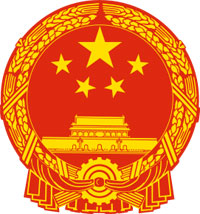
Китай — третье по площади и первое по численности населения государство в мире. Расположено в Восточной Азии, омывается Желтым, Восточно-Китайским и Южно-Китайским морями Тихого океана.
Название «Китай» произошло от государства киданей (китаев), существовавшего в X-XII веках нашей эры на территории современной Маньчжурии. Английское название, «China» — от санскритского именования династии Чин, а самоназвание китайцев — «Чун Гуо» — означает «Центральное (срединное) царство».
Столица: Пекин
Язык: китайский
Валюта: юань
Зона в Internet: .cn
Рейтинг производителей китайскиих авто
Легковые автомобили
| Changan Automobile |
| Страна:Китай |
| Адрес:Yu Dong Town Ba Nan District Chongqing, 401321 China |
| Телефон:86 40 0107 7988 |
| Сайт:www.changan.com.cn |
| Основание1862 |
| Персонал41 173 |
| Продажи$10.58 B |
| Changan Automobile китайская автомобилестроительная компания. Третий по величине автопроизводитель в Китае, входит в число 20 крупнейших производителей государства. В 2008 году на заводах фирмы б… |
Подробнее
Промышленность.
| BYD Co Ltd |
| Страна:Китай |
| Город:Shenzhen |
| Адрес:Shenzhen, GNG 518118 China |
| Телефон:+86-755-89888888 Факс755-84202222 |
| Сайт:www.byd.com |
| Основание1995 |
| Персонал224280 |
| BYD Co Ltd— производитель автомобилей, расположенный в Шэньчжэне (Китай). BYD Auto является дочерней компанией фирмы BYD Company Ltd, которая впервые объявила о себе в 1995 г… |
Подробнее
Электромобили
| BYD Auto |
| Страна:Китай |
| Адрес:No.3009, BYD Road, Pingshan, Shenzhen, 518118, P.R.China |
| Телефон:86-755-89888888 |
| Сайт:www.byd.com |
| Основание1995 |
| Персонал220 000 |
| Продажи$15.31 B |
|
BYD Auto — производитель автомобилей, расположенный в Шэньчжэне (Китай). BYD Auto является дочерней компанией фирмы BYD Company Ltd, которая впервые объявила о себе в 1995 году. Автокомпания BY… |
Подробнее
Легковые автомобили
| Great Wall Motor |
| Страна:Китай |
| Адрес:2266 Chaoyang South Street, Baoding city, Hebei Pro.,P.R.China |
| Телефон:863 122 196 670 |
| Сайт:www.gwm.com.cn |
| Основание1984 |
| Персонал71 617 |
| Продажи$14.21 B |
| Great Wall Motor основана в 1976 году в городе Баодин, что расположен в провинции Хэбэй (Baoding, Hebei, China), где и по сей день находится ее головной офис. Изначально ее полное название выглядело к… |
Подробнее
Грузовые автомобили
| SAIC Motor (Shanghai Automotive Industry Corporation) |
| Страна:Китай |
| Город:Shanghai |
| Адрес:489 Weihai Road, Shanghai |
| Телефон:86-021-22011888 |
| Сайт:www.saicmotor.com |
| Основание1995 |
| Персонал171 395 |
| Продажи$112.72 B |
| SAIC Motor — китайская государственная автомобилестроительная компания. Крупнейший китайский автопроизводитель. Компания была переименована в SAIC Motor Corporation Limited. Председатель совета директ… |
Подробнее
Легковые автомобили
| BAIC Motor |
| Страна:Китай |
| Город:Beijing |
| Адрес:No. 99 Shuanghe Street Shunyi Beijing, 101300 China |
| Телефон:86 10 8766 4009 |
| Сайт:www.baicmotor.com |
| Основание1988 |
| Персонал25 159 |
| Продажи$17.45 B |
| Beijing Automotive Industry Holding Co., Ltd. — государственный холдинг, расположен в Пекине. Его подразделение BAIC Motor занимается производством легковых автомобилей, BAW — производством внедорожни… |
Подробнее
Двигатели
| Lifan |
| Страна:Китай |
| Город:Chongqing |
| Адрес:No.60, Zhangjiawan, Shangqiao, Shapingba District, Chongqing, China |
| Телефон:86-23-6166 3053 |
| Сайт:www.lifan.com |
| Основание1992 |
| Компания Lifan, которая сегодня считается одним из крупнейших производителей автомобилей, мотоциклов, а также двигателей к ним в Китае, была создана известным бизнесменом Йин Мингшаном относительно не… |
Подробнее
Легковые автомобили
| Dongfeng Motor Group |
| Страна:Китай |
| Адрес:Road Wuhan Economic & Tech Develpmnt WUHAN HUB 430056 |
| Телефон:8627-84285555 |
| Сайт:www.dfmg.com.cn |
| Основание1969 |
| Персонал149 092 |
| Продажи$18.41 B |
| Государственный концерн DONGFENG Motor — один из крупнейших производителей легковых и коммерческих автомобилей в Китайской Народной Республике и один из самых крупномасштабных производителей автомобил… |
Подробнее
Легковые автомобили
| Geely Automobile |
| Страна:Китай |
| Город:Ханчжоу |
| Телефон:(852) 2598 3333 |
| Сайт:www.geelyauto.com.hk |
| Основание1986 |
| Персонал124 846 |
| Продажи49,665 млрд $ (2019 год) |
| Geely Automobile Holdings – китайская автомобилестроительная компания, входящая в состав многопрофильной группы Geely Holding Group и специализирующаяся на создании, выпуске и продаже легковых а… |
Подробнее
Автобусы
| Jiangling Motors Corporation Limited |
| Страна:Китай |
| Город:Nanchang |
| Адрес:NO.509,Northern Yingbin Avenue,Nanchang City,Jiangxi Province,P.R.C |
| Сайт:www.jmc.com.cn |
| Основание1993 |
| Персонал16 865 |
| ПродажиCN¥34.35 млрд |
| Компания JMC (Jiangling Motors Co., LTD) производит коммерческие грузовики, легковые автомобили, микроавтобусы, внедорожники. С 1968 г. компания, тогда именуемая Jiangxi Automobile Manufactory, выпуск… |
Подробнее
Поделитесь страницей «Крупнейшие производители легковых автомобилей в Китае» в Социальных сетях
Сеть качества автомобилей составила рейтинг самых качественных брендов Китая. Haval, Changan и Geely показали результат выше среднего. А вот марки, входящие в Chery Group и BAIC Group, подкачали.
Напомним, что ранее подобными рейтингами нас часто радовало китайское подразделение американского агентства J.D. Power. Теперь же свою версию представила китайская Сеть качества автомобилей, созданная по инициативе Администрации КНР по регулированию рынка. Тесная связь с государством намекает на авторитет составленного рейтинга. Но его результаты могут удивить.
Сразу отметим, что качество автомобилей с ДВС и электрокаров разделили по разным группам. В ходе исследования оценивалось количество дефектов, жалоб и неисправностей, надёжность, безопасность и экологичность транспортных средств. Чем ниже оказалось количество претензий к отдельно взятой марке, тем выше она в списке.
Рейтинг качества брендов Китая с бензиновыми автомобилями
Согласно исследованию, средний рейтинг качества оказался равен 178. Это значит, что автомобили с меньшим значением – более качественные.
В инфографике: рейтинг качества автомобильных брендов, выпускающих машины с ДВС (верхняя часть)
Сразу отметим, что в топ-5 вошли несколько китайских брендов. На первом месте с приличным отрывом оказалась Dongfeng Honda (131). Вторую строку разделили между собой сразу три бренда – Mitsubishi, Volvo и основанная совместными усилиями FAW и Volkswagen марка Jetta. Их рейтинг – 141. Третье место заняла снова Honda, но уже в сотрудничестве с GAC. А компанию ей составил бренд Hongqi (146), входящий в FAW Group. Четвёртое и пятое место — у Dongfeng Fengon (149) и GAC Toyota (153).
- Hongqi N701. Подробности о личном автомобиле Си Цзиньпина, на котором он ездит по Москве
Geely (157) удалось занять восьмую строчку. Удивительно, но это место она разделила с дешёвым китайским брендом Wuling (157) и премиальным немецким Mercedes-Benz (157), сборку которого ведёт компания Fujian. Интересно, что на девятое место попал совместный бренд Geely и Volvo – Lynk & Co. Среди прочих китайских брендов с рейтингом выше среднего оказались Dongfeng Forthing (165), Changan (167), Tank (168), Karry (168), Changan Oshan (176), Haval (177), Dongfeng Aeolus (177), GAC (177) и Roewe (177).
***
А вот ниже среднего качество оказалось у бренда Sehol (182). Напомним, что его машины продаются у нас под брендом JAC, а также они стали основой для модельной линейки бренда «Москвич». Также разочаровало качество Chery (184) и Bestune (184). Внезапно, внизу рейтинга оказались Exeed (204) и Jetour (224), входящие в Chery Group. Разочаровал и готовящийся к появлению в России бренд VGV (194).
- «Понаедут тут всякие». О чем говорят отзывы владельцев JAC, которые стали «Москвичами»
Отдельного упоминания заслуживает то, что автомобили, собираемые компанией BAIC Group, оказались внизу рейтинга. Среди них – как собственные бренды BAIC, так и импортные марки, за сборку которых отвечает данный производитель. А мы напомним, что выпуск автомобилей BAIC в России планируют наладить на заводе «Автотор». Видно, сотрудникам производственного центра придётся поработать над улучшением их качества.
Рейтинг качества брендов Китая с электромобилями и гибридами
Особняком в данном рейтинге стоят бренды-производители исключительно электромобилей или гибридов.
В инфографике: рейтинг качества автомобильных брендов, выпускающих электрокары и гибриды
Среди них пятёрку лучших сформировали GAC Aion (125), ArcFox от BAIC (126), BYD (127), Geely Geometry (127), Neta (129) и Rising Auto от SAIC (134). Отдельно отметим и бренд Skywell (154), официально представленный в России. Его качество оказалось выше среднего. А Chery New Energy как раз оказался в той самой «золотой» середине рейтинга с результатом в 171. Ниже опустились Zeekr от Geely (224), Tesla (227), Denza от BYD (231) и AITO (251).
- Электробум. Китай может кардинально изменить рынок электромобилей в России
Отметим, то результаты составленного китайской Сетью качества автомобилей рейтинга отличаются от тех, что получило агентство J.D. Power. Так, по версии его экспертов, качество бренда Chery выше среднего. Более того, Chery даже несколько превосходил по качеству Geely и Lynk & Co. При этом Changan стал одной из самых качественных марок по обеим версиям. Какой из источников точнее – сказать сложно.
Денис БОБЫЛЕВ (YouTube)
Если вы нашли ошибку или хотите что-то сообщить редакции сайта, пожалуйста, выделите фрагмент текста и нажмите Ctrl+Enter
Научитесь безопасно инвестировать в условиях кризиса и выгодно использовать падение рынка. Бесплатный онлайн марафон «Я — Инвестор». Принять участие.
SAIC Motor Corp. Ltd занимается разработкой, производством, продажей автомобилей и сопутствующих деталей. Работает в двух сегментах: транспортные средства и запчасти, финансирование. Деловые операции включают продажу пассажирских и коммерческих транспортных средств, а также таких компонентов, как двигатель, трансмиссия, силовая передача, шасси, внешняя отделка. Компания основана 24 ноября 1997 года, штаб-квартира в Шанхае, Китай.
- Рыночная капитализация: 31.3 млрд
BYD Co. Ltd занимается исследованиями, разработкой, производством и продажей аккумуляторных батарей. Компания также производит и продает автомобили и сопутствующие товары, компоненты для мобильных телефонов, LCD и другие электронные продукты. Компания основана 10 февраля 1995 года, штаб-квартира в Шэньчжэне, Китай.
- Рыночная капитализация: 17.2 млрд
Guangzhou Automobile Group Co. Ltd занимается автомобильным бизнесом. Работает через сегменты «Транспортные средства и связанные с ними операции» и «Другие». Сегмент «Транспортные средства и связанные с ними операции» производит и продает различные легковые и коммерческие транспортные средства, автозапчасти и связанные с ними услуги. Сегмент «Другие» предлагает мотоциклы, автомобильные финансы и страхование, а также инвестиционный бизнес. Компания основана 6 июня 1997 года, штаб-квартира в Гуанчжоу, Китай.
- Рыночная капитализация: 9.2 млрд
Chongqing Changan Automobile Co. Ltd занимается производством и дистрибуцией автомобилей, автомобильных двигателей и запасных частей. Продукция компании: легковые и коммерческие автомобили. Управляет фабриками в Чунцине, Пекине, Цзянсу, Хэбэе, Чжэцзяне и Цзянси. Компания основана в 1862 году, штаб-квартира в Чунцине, Китай.
- Рыночная капитализация: 6.2 млрд
Great Wall Motor Co. Ltd занимается производством и продажей автомобилей, а также исследованиями и разработками, производством и продажей автозапчастей и аксессуаров. Продукция: спортивные автомобили, пикапы и легковые автомобили. Компания основана в 1984 году, штаб-квартира в Баодине, Китай.
- Рыночная капитализация: 6.1 млрд
Dongfeng Motor Group Co. Ltd производит и продает коммерческие, легковые автомобили и автомобильные двигатели и запчасти. Также производит оборудование для производства транспортных средств, имеет финансовый бизнес и связанные с автомобилями предприятия. Компания основана 18 мая 2001 года, штаб-квартира в Ухане, Китай.
- Рыночная капитализация: 5.7 млрд
BAIC Motor Corporation Limited — китайский автопроизводитель, базирующийся в Пекине, Китай. BAIC Motor была зарегистрирована в 2010 году как субхолдинг BAIC Group. В марте 2015 года объявила о планах расширить свое партнерство с Daimler AG, взяв 35-процентный пакет акций Mercedes-Benz Leasing Китайской объединенной лизинговой компании.
- Рыночная капитализация: 3.5 млрд





